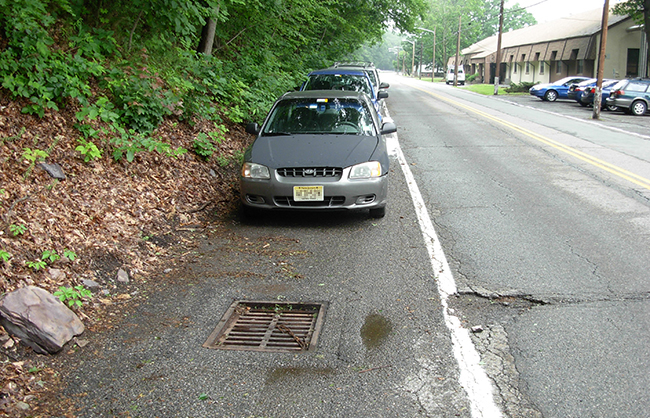On-Street Parking

About 20 percent of all crashes in built-up areas involve vehicles parked along the roadway. On-street parking is not desirable on arterial or collector roads that are designed to move high traffic volumes at moderate or high speeds. On lower speed roadways, such as residential streets, on-street parking is acceptable because it "calms" traffic and thus reduces vehicle speeds.
Angle on-street parking provides more parking per unit of curb length than parallel parking. However the principal hazard of angle parking is the driver's lack of adequate visibility during backing out maneuvers, especially when a large vehicle is parked upstream. Because empty parking stalls are difficult to see with angle parking, motorists who are seeking a place to park create another hazard. They must either proceed slowly in order to find an empty stall, or stop abruptly when they come to an empty stall. On-street angle parking is generally unsafe and its use should be discouraged.
Per UFC 3-210-02, on-street parking will be limited to parallel parking spaces that include sufficient length and width to allow safe movement into and out of the space and to adequately separate the parked vehicle from the traffic lanes.


